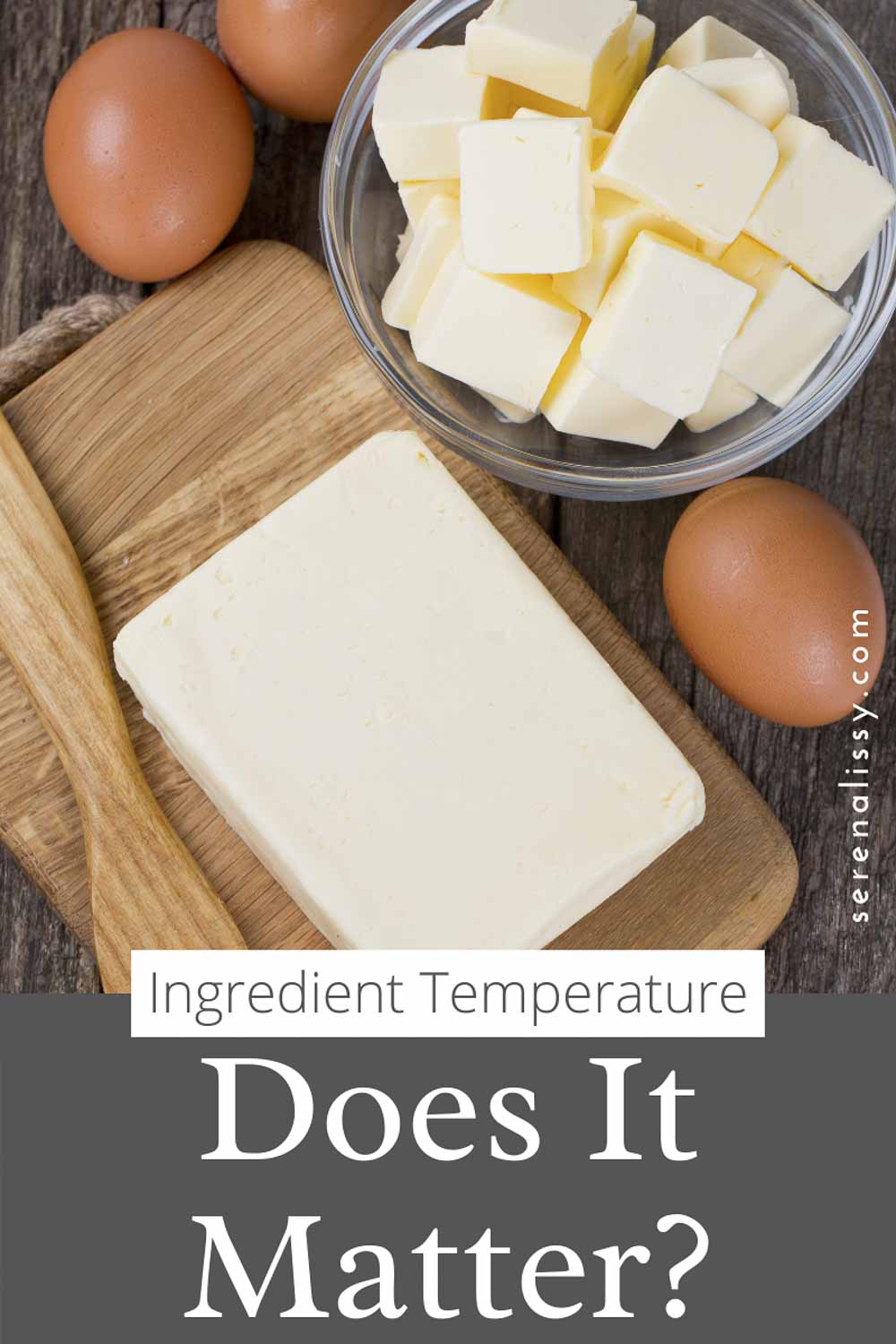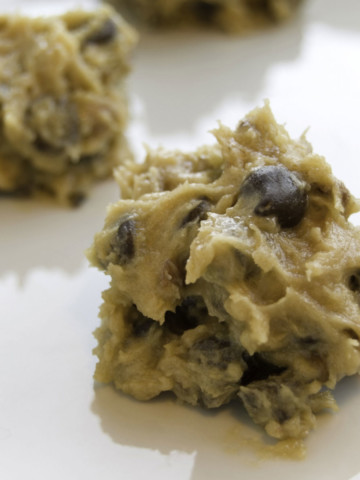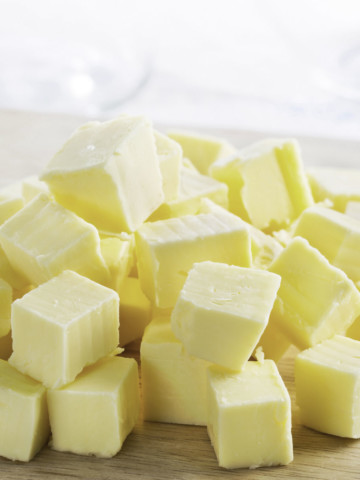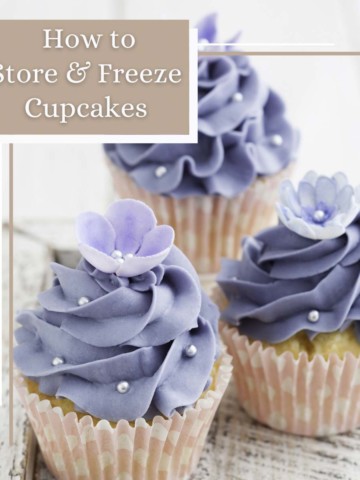If you’re like me, you love to bake, but you also love to eat. And while anyone can put ingredients together and technically make a bake...there’s a reason so many of us have favorite recipes, bakeries, and even bakers!
Baking comes down to a science, and how closely you follow (or fail to follow) a recipe can make a world of a difference when it comes to flavor, texture, and mouth-feel. Today, we’re exploring the importance of why room temperature ingredients make a difference, and why it's a good idea to follow what the recipe asks for.
There are countless recipes that call for ingredients to only be used at room temperature, but we’ve all ignored that detail at least once. Here are some reasons behind that fine print that might inspire us to follow them next time!

Emulsifiers, Baking, and Room Temperature Ingredients
Have you heard of emulsifiers in baking? An emulsifier is a scientific word for an ingredient or substance that brings together other ingredients of different qualities. In baking, emulsifiers help ingredients with water and fat content bind together.
Food Scientist Matt Gennrich explained to Baking Business that emulsifiers help bind both hydrophilic and lipophilic ingredients. So, emulsifier ingredients can bind to both water and fat-loving add-ins to bind your whole mixture together.
While this might sound like a fancy new ingredient, you’ve probably been using emulsifiers to bake your whole life! Eggs have emulsifying properties. Whenever you mix liquids and feel a bit of resistance in their coming together, you’re probably forcing an emulsion. I have no doubt your favorite cookie recipe uses emulsifiers.
A few emulsifiers that require a bit more planning include DATEM, and mono and diglycerides. These can be purchased separately and some bakers swear by them for more difficult doughs.
You don’t have to dive into powered add-ins to be a great baker. Keep emulsion in mind when mixing and you’ll benefit from the added patience with your bake.
Room Temperature Butter and Baking
One of the quickest baking lessons I learned is the importance of room temperature butter when baking! A vast number, if not a majority of baking recipes call for butter creamed with sugar, the creaming method. It’s a common first step for many cookie recipes to get the creamy texture needed.
Butter needs to be room temperature or at least, not completely solid in order to cream properly. When mixing sugar and butter together, the sugar creates a lifting effect inside the butter, incorporating air into the mixture.
This doesn’t happen with cold butter, as the sugar particles simply cut away at the hard butter block and create a crumbly mess.
Our Chocolate Butter Cookies recipe uses both melted and room-temperature butter. The melted butter is used to create a chocolate mixture with cocoa powder. The room-temperature butter is creamed with sugar and salt to create a fluffy-textured dough base. You’ll also find creaming butter with sugar to be a staple in recipes like our Manchego Cheesecake. That recipe calls for the technique to form graham cracker sheets used as a crumble in the final dish. Yum!

Prepping Your Room Temperature Ingredients
Cook’s Illustrated has a great guide to softened butter, which should bend without cracking at room temperature. If you’re forgetful (and let’s face it- we all are sometimes) you can also soften butter quickly by cutting it into small pieces and placing a warm towel over the bowl.
Microwaving frozen butter to soften is also a viable solution, although you’ll have to be careful to avoid melting it completely. Melted butter will prevent air bubbles when creaming, creating a quick, greasy mess.
Another popular ingredient often requested at room temperature is eggs. We’ve all heard of curdling. Curdling is the opposite of emulsion and describes the formation of lumps and clumpy mixtures. Not ideal for many (if any) recipes.
Eggs are huge instigators of curdling, as adding cold eggs can accidentally curdle a mixture due to the temperature difference. Curdled cake batters tend to rise poorly and don't usually result in fluffy cakes. Similar to creaming sugar in butter, eggs are also famous for their versatile texture. Beating eggs is essential for macarons, and for any recipe needing a fluffy effect. If you have forgotten to take your eggs out of the refrigerator, the best way to get them to room temperature quickly is to place them in a bowl of warm water. The temperature change will definitely take less time than just leaving them on the counter.
Because eggs and butter are so versatile, always check the recipe first to see if it calls for room temperature eggs, butter or even other dairy products like milk, sour cream or cream cheese.
When to Use Cold Ingredients
Okay, okay. We get it, emulsion is important! Planning is important! And thankfully microwaving can save our behinds on off days. But are there any cases in which cold ingredients are actually preferred?
There are! While soft butter and room temperature eggs are perfect for fluffy textures in pastries, crumbly textures benefit from cold ingredients. This includes recipes for pie dough, scones, and more. So why is this true?
Well, think of it like this. Emulsion creates air pockets and creaminess, while cold ingredients cause curdling. Curdling would then leave small lumps of butter and other fats in the dough, which reacts to heat in all of its original glory.
This results in crumbles and flakes. Absolutely delicious in a purposeful pie dish, but a little less desired in cake. Yum!
Creating a Habit of Room Temperature Ingredients
Like any baking best practice, practice makes perfect with your baked goods. We’ve all used cold ingredients instead of room temperature, or completely messed up a recipe by misreading instructions. Part of the joy of baking is learning and adjusting as you go!
Now that you know more about the importance of choosing the right temperature of ingredients, go ahead and make yourself a cheat sheet on types of bakes. Cakes and cookies typically require room temperature ingredients, while the keyword for cold ingredients is "flaky."
Sometimes, the best cheat sheets are all-encompassing for a certain category, like our post on the Top 10 Baking Tips for the Perfect Cake.
Some of our favorite recipes for practice with using room temperature ingredients include our Lemon Cheesecake Recipe and these Red Velvet Cookies. On the other hand, our recipe for Peanut Butter Cream Pie can benefit from slightly colder butter to form a flaky crust. Finally, remember that baking is all about practice and confidence. No one is an expert in a day, and we only grow with passion. Ready to learn more about baking and growing as a lover of sweets and more? Read our post on Top 10 Baking Tips today.
As an Amazon Associate and member of other affiliate programs, I earn from qualifying purchases. What that means is if you click on one of our affiliate links, they may toss a few pennies our way for a commission.

Looking For More Recipes?
Subscribe to my free newsletter to get new recipes in your inbox monthly. Find me sharing new recipes and tips on Pinterest, Instagram or Facebook.






Erika Ritchie says
This is a great post! I agree that the temperature of ingredients makes a huge difference.
serena says
Thanks Erika!
Angela says
So much great information here. In baking your recipe will always come out better if you are meticulous with your ingredients. Thanks for the reminder.
serena says
Thanks Angela 🙂
veenaazmanov says
This is such an informative and helpful post. Will surely make a difference while following recipes. Thanks
serena says
Thanks!
Lauren Vavala says
This is such good information for an at home baker to know! We learned a lot about this in culinary school and always had a chunk of butter and eggs sitting out 🙂
serena says
We did as well in school.
maryanne says
What a great post! Thank you for the detailed information. I am a pretty experienced baker, and I still learned a few new things!
serena says
Thanks Maryanne!